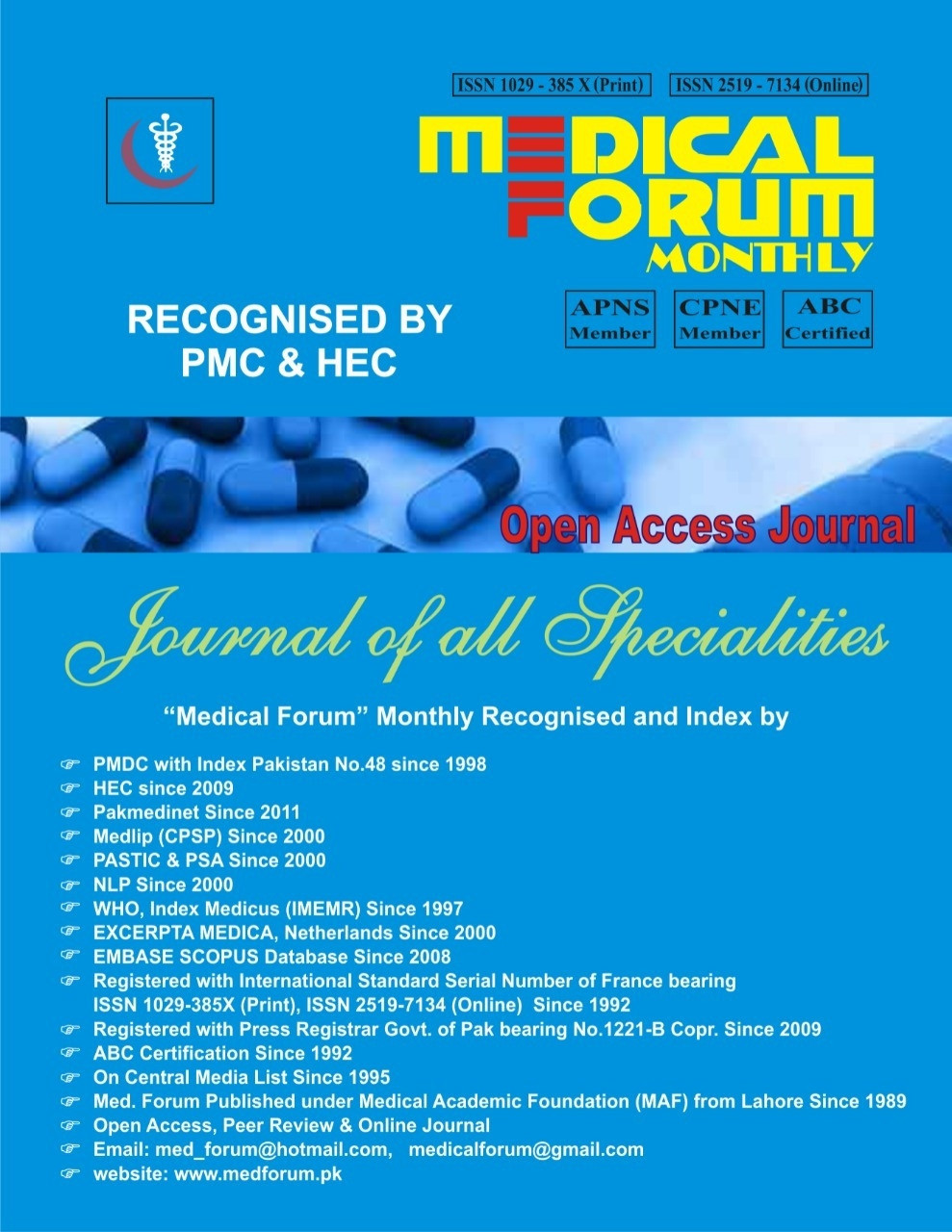
13. Exploring Musculoskeletal Symptoms in Adolescent Athletes and Non-Athletes: A cross-sectional study
Shehla Khatoon1, Munila Khattak1, Syeda Gulrukh Saba Shah2, Sadaf Ambreen1, Shabnam Amir1 and Arsalan shah Roghani3
ABSTRACT
Objective: To investigate and compare the prevalence and impact of musculoskeletal symptoms in adolescent athletes and non-athletes. The results might help to improve preventive measures and rehabilitation strategies that foster musculoskeletal health in both populations, evaluate potential gender differences.
Study Design: A cross-sectional study.
Place and Duration of Study: This study was conducted at the department of Orthopedic KTH Peshawar from January 2021 to January 2022.
Methods: A total of 750 adolescent athletes mean age: 16.14 ± 01.26 and 337 non-athlete controls mean age: 12.58 ± 01.32 were recruited for this study. Anthropometric information was taken and was examined for musculoskeletal symptoms developed over the 8-month duration using Teen Nordic Musculoskeletal Screening Questionnaire TNMQ-S. The assessment of symptoms and the level of control of school absenteeism and physical activity was compared in the two groups.
Results: More non-athlete controls reported a percentage of symptoms development in the neck n-341 (45.2%) vs. 186(24.8%) upper back 315 (42.2%) vs. 150(20.8%) and low back 322(43.2%) vs. 261(34.8%) B. These regions have shown a higher rate of school absenteeism and physical exercises on the impact in the non-athlete group. C. There was a more significant development of shoulder 277(37.1%) vs. 202(27.2%) and wrist/hand 178(23.8%) vs. 114(15.2%) symptoms among non-athletes, while it was more common in the elbow 69(9.2%) vs. 76(10.2% group).
Conclusion: This study highlights disparities in musculoskeletal symptom prevalence and their impact on school attendance and physical activity between adolescent athletes and non-athletes. Non-athlete controls exhibited higher symptom prevalence, particularly in the neck, upper back, and low back regions, emphasizing the need for targeted preventive and rehabilitative interventions in this population.
Key Words: adolescent, musculoskeletal symptoms, athletes, non-athletes.
